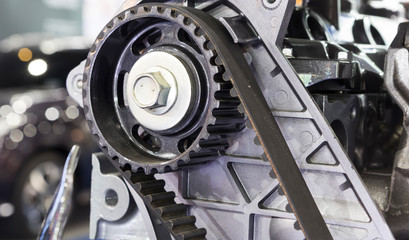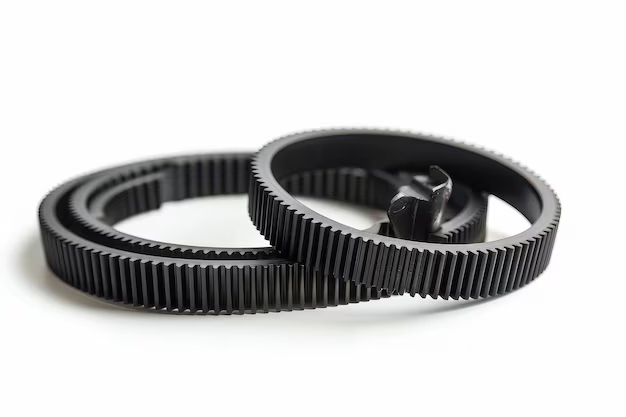Deck tech belts sony cfd 20: A Complete Guide

The deck tech belts sony cfd 20 is a beloved classic that combines a radio, cassette player, and CD player all in one compact unit. For many, it’s more than just a player—it’s a nostalgic piece of tech history. However, like most electronics, the CFD-20 requires some upkeep over time. One of the most common issues with this model is the deterioration of the deck belt, a crucial component for cassette playback. Let’s dive into what makes these belts important and how to keep your CFD-20 in top condition with proper maintenance.
Understanding the Deck Mechanism of the Sony CFD-20
The deck mechanism is the heart of the cassette player function in the CFD-20. This includes various gears, pulleys, and belts that work in harmony to deliver smooth playback. Over time, these parts can suffer from wear, causing playback issues and the need for replacement parts. By understanding these components, users can better diagnose and address issues that arise with their Sony CFD-20.
What are Deck Tech Belts?
Deck belts, often referred to as drive belts or cassette belts, are rubber belts found in cassette decks. They are crucial for ensuring the cassette tape plays at a consistent speed by transferring motion from the motor to the tape. Without a functional belt, the cassette deck in the CFD-20 won’t be able to play tapes, rendering a major feature of the device unusable.
Why Do Deck Belts Wear Out?
Over time, deck belts naturally degrade. Factors like humidity, heat, and prolonged use can cause belts to lose elasticity, crack, or even snap. The Sony CFD-20’s belt lifespan is influenced by both usage frequency and storage conditions. Regular checks and understanding these wear-out factors can help extend the belt’s life.
Signs Your Sony CFD-20 Needs a New Deck Belt
There are a few telltale signs that the deck belt in your CFD-20 might need replacement:
- Distorted or inconsistent audio playback: This can happen if the belt is slipping or has lost tension.
- Slow tape speed: An aging belt may struggle to keep the cassette running at the correct speed.
- Visible cracks or wear: If you open the cassette compartment and see a worn or cracked belt, it’s time for a replacement.
Types of Deck Belts for the Sony CFD-20
- Flat belts: Often found in larger cassette decks, though not commonly required for the CFD-20.
- Square belts: These are common in the CFD-20 and are typically preferred for their durability and stability.
- Round belts: Some users prefer round belts, though they may not provide the same stability as square belts in this model.
Choosing the Right Replacement Belt
When looking for a replacement belt, consider both size and material. Look for belts specifically designed for cassette players, as these are made to handle the mechanics of tape playback. Be cautious of generic belts, as they may not meet the specifications for the CFD-20, leading to poor performance.
Where to Find Replacement Deck Belts for the Sony CFD-20
Finding a replacement deck belt is easier than ever, with options available both online and in select stores:
- Online marketplaces: Websites like eBay and Amazon often stock replacement belts specifically for the deck tech belts sony cfd 20.
- Specialty electronics stores: Some stores specializing in vintage electronics may also carry deck belts or can order them for you.
Tools Required for Replacing Deck Belts
Before replacing the deck belt in your CFD-20, gather these essential tools:
- Screwdrivers: Both Phillips and flat-head screwdrivers are necessary to access internal components.
- Tweezers: Useful for removing small parts and positioning the new belt.
- Cleaning solution: To clean any residue left by the old belt.
Step-by-Step Guide to Replacing the Deck Belt
- Preparation: Unplug your CFD-20 and ensure it’s on a stable surface.
- Accessing the Deck: Remove any screws securing the cassette compartment and gently lift the lid.
- Removing the Old Belt: Carefully remove the old, worn belt. Note its path for easy replacement.
- Installing the New Belt: Place the new belt in the same position as the old one. Use tweezers if needed.
- Testing: After assembly, test the cassette player to ensure smooth playback.
Testing and Troubleshooting After Installation
Once you’ve replaced the belt, test the device by playing a cassette. Listen for any unusual sounds or inconsistencies. If the belt slips, check that it’s installed correctly and securely seated on all pulleys.
Preventative Maintenance for Deck Belts
Regular maintenance can extend the life of your new deck belt:
- Keep the CFD-20 in a dry environment: Moisture can damage rubber components.
- Limit sun exposure: UV light can degrade rubber belts over time.
- Regularly clean the cassette compartment: Dust and debris can affect playback quality.
Additional Parts That May Need Replacement
In addition to the deck belt, consider inspecting these components, as they can also impact playback:
- Pinch rollers: These can harden over time and affect tape movement.
- Capstans: Regular cleaning of the capstans ensures the tape moves smoothly.
Benefits of Maintaining the Sony CFD-20
Properly maintaining the Sony CFD-20 not only preserves sound quality but also enhances its longevity, making it possible to enjoy tapes for years to come. DIY maintenance is a cost-effective way to keep your classic device in prime condition.
Conclusion
The deck tech belts sony cfd 20 is a unique device that blends vintage charm with reliable audio functionality. While deck belts may wear out, replacing them is a simple and rewarding DIY project. By taking the time to understand the belt replacement process, you can continue enjoying your cassette collection on this timeless machine.
Read Also: lincolnia-adult-day-health-care-reviews
FAQs
How often should I replace the deck belt?
Replacement intervals depend on usage, but generally, every 2-5 years is a good guideline for light to moderate use.
Can I use any brand for a replacement belt?
It’s best to use belts designed for cassette decks to ensure compatibility and durability.
What tools are absolutely necessary?
A screwdriver and tweezers are essential. Additional tools can make the process easier but aren’t required.
Is it safe to replace the deck belt myself?
Yes, with the right tools and care, replacing the belt is a straightforward task.
How do I know if the belt is correctly installed?
The cassette should play smoothly without slipping or unusual noises. If issues persist, recheck the belt’s alignment.




